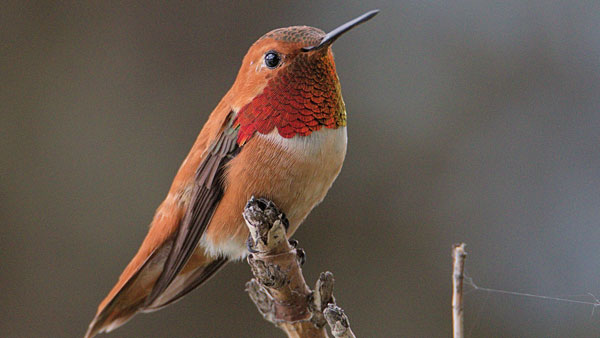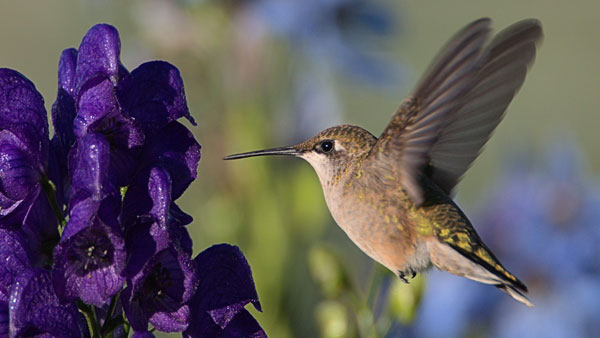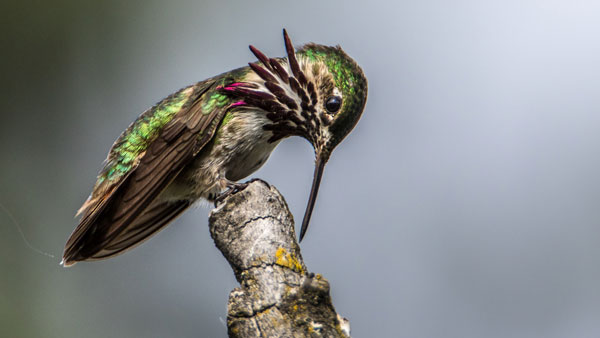Hummingbirds
The arrival of hummingbirds in Calgary often coincides with International Migratory Bird Day, celebrated on the second Saturday of May.
These tiny migrants come north from Mexico and Central America - a journey of thousands of kilometres. No small feat for a creature the weight of a penny. Many hummingbirds breed and raise their young right here in Calgary. These birds have a thirst for nectar and are excellent pollinators.
Also reliant on insects and sap in their diets, hummingbirds act as a natural form of backyard pest control. Look for these winged wonders in your backyard or local park.
Watch for these hummingbirds in your garden this spring.
Attract hummingbirds to your yard
Consider planting native trees, shrubs, and flowers with tubular blooms, such as paintbrush or fireweed, to attract hummingbirds. Alternatively, place a hummingbird feeder in your backyard.
To mix solution for a hummingbird feeder, combine one cup of boiling water with 1/4 cup refined white sugar. Allow to cool before placing in feeder. Hummingbird feeders should be cleaned at least once a week to prevent the growth of mold.
Rufous Hummingbird

This hummingbird prefers nectar from flowers with a tube-like shape such as wild columbines, wild bergamot, and beardtongues. Rufous hummingbirds also eat insects and spiders. Notoriously territorial, this type of hummingbird will aggressively defend feeders and nesting territory from larger birds.
Ruby-Throated Hummingbird

The Ruby-throated hummingbird is the most common and widely distributed hummingbird in Canada. These winged wonders prefer to sip nectar from red or orange flowers that contrast against green foliage. The diet of Ruby-throated hummingbirds also includes aphids, gnats, and mosquitos.
Calliope Hummingbird

The smallest of Alberta’s hummingbirds, the Calliope hummingbird often drinks from low-blooming flowers, or flowers with single blooms. Focusing on flowers with these characteristics allows this tiny bird to avoid competition from larger, more aggressive hummingbirds.

